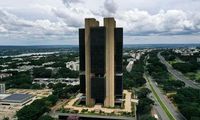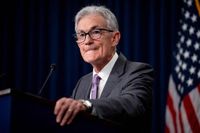In a pivotal meeting held on March 19, 2025, the Central Bank of Brazil's Monetary Policy Committee (Copom) is widely expected to announce an increase in the country’s basic interest rate, known as Selic, from 13.25% to 14.25% per annum. If confirmed, this adjustment will be the highest the rate has reached in nearly two decades and represents the fifth consecutive increase in a tightening monetary policy cycle that began in September 2024.
The anticipated increase is largely attributed to persistently high inflation rates, which reached 1.31% in February—the highest for that month since 2002. Cumulatively, inflation measured by the IPCA (Índice de Preços ao Consumidor Amplo) has surged to 5.06%, surpassing the target ceiling set by the National Monetary Council (CMN), which is normally 4.5%.
This decision occurs under the new leadership of Central Bank President Gabriel Galípolo, who is presiding over his second Copom meeting. Galípolo’s recent choices and leadership style have garnered significant attention in light of current economic conditions. Analysts observe that while the market expects the increase, the focus will also be on the accompanying announcement for signals regarding future monetary policy approaches.
The financial community closely monitors not only the Brazilian economic landscape but also the decisions made by the Federal Reserve (Fed) in the United States, which is anticipated to maintain its interest rates between 4.25% and 4.50% during its impending meeting. The influence of U.S. interest rates on investment flows and currency exchanges in Brazil cannot be overstated, as shifts in U.S. monetary policy tend to reverberate through emerging markets.
Economic experts highlight the dual pressures of rising food and energy prices contributing significantly to inflation. The latest reports from the Focus bulletin project inflation for the year to reach 5.66%, putting further strain on the already challenging economic circumstances.
In practical terms, an increase in the Selic rate will have direct repercussions on the cost of credit across the country, making loans and debt servicing more expensive for consumers and businesses alike. For instance, someone with a debt of R$10,000 at a 14.25% interest rate will face annual interest payments of R$1,142, a stark increase from R$1,100 under the current rate.
Banks tend to respond to hikes in the Selic rate by adjusting their lending rates, thereby limiting available credit and exacerbating debt stress for numerous households already struggling under the weight of economic pressures. The National Confederation of Commerce (CNC) reports that approximately 78% of Brazilian families were indebted as of February 2025, with credit cards playing a pivotal role in this widespread financial strain.
In the Amazon state specifically, defaults are alarmingly high, affecting around 53% of adults—significantly surpassing the national average of 45%. Here, the local financial crisis culminates in R$7.8 billion of unresolved debt affecting 1.5 million registered defaults, with each defaulted consumer averaging four separate debts totaling R$4,952.55.
Given the complexities surrounding these figures, experts are divided over the Central Bank's future trajectory on interest rates. While some speculate that the pace of increases may ease in upcoming meetings, others project that the rates could peak at around 15% by the end of the monetary tightening cycle.
Governance in times of inflation becomes a delicate balancing act, with the need for robust policy measures against the backdrop of the global economic uncertainties. As the Copom prepares to release its decision later in the day, investors await critical hints on how Brazil will maneuver through these turbulent waters.
The economic forecast appears murky, with the government recently trimming its GDP growth estimate for the year from 2.06% to 1.99%, forecasting stability at around 2% growth for the subsequent years. As Brazil grapples with escalating inflation, investors must remain vigilant and responsive to forthcoming policy adaptations from the Central Bank, especially in light of external pressures from international financial conditions.







